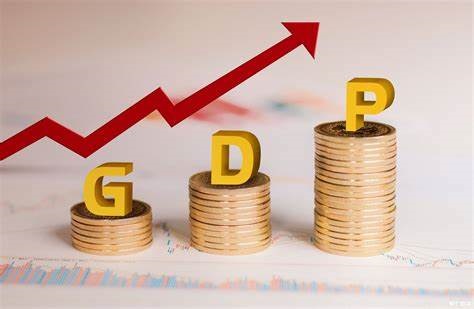
Recently, European Central Bank Executive Board member Isabel Schnabel pointed out that the eurozone economy is stagnating, and there are increasing signs that it is weakening. This statement has attracted a lot of attention, and it also makes us think deeply about the complex situation facing the European economy today and the underlying reasons behind it.
Europe's weakness is reflected above all in its lack of economic growth. The survey data showed that the eurozone economic growth slowed sharply at the end of the third quarter, and the eurozone composite purchasing managers' index (PMI) in September was 48.9%, down 2.1 percentage points from the previous month, and for the first time below the 50% dividing line between expansion and contraction. The decline of this key indicator means the contraction of economic activity, the reduction of business production and orders, and the market confidence has been hit to a certain extent. Many sectors, such as manufacturing and services, have been affected, and enterprises are facing multiple pressures such as insufficient orders and rising costs, leading to a decline in the willingness to expand, which in turn affects the growth momentum of the entire economy.
The labor market, an important support for the economy, is also showing signs of weakness. While Schnabel noted that the labor market remains somewhat resilient, "increasing signs of weakness" cannot be ignored. Job growth is likely to slow and there is a risk that the unemployment rate will rise. On the one hand, companies may reduce hiring plans or lay off workers to reduce costs in a sluggish economy. On the other hand, the pace of new job creation has slowed, resulting in a gradual shift in the supply-demand relationship in the labor market. This not only affects the income and living standards of individuals, but also has a negative impact on the consumption power and economic vitality of the whole society.
In this economic situation, the ECB's policy faces a huge challenge. On the one hand, in order to stimulate economic growth, the European Central Bank may need to adopt further monetary easing policies, such as interest rate cuts. However, market expectations for an ECB rate cut have now risen to 80 per cent, with traders pricing in a total of 142 basis points of cuts by June. This over-reliance on monetary policy also has certain risks. Although a low interest rate environment can reduce financing costs for enterprises and individuals, it may not effectively stimulate investment and consumption, but may lead to asset bubbles and other problems. On the other hand, the ECB also needs to find a balance between promoting economic growth and maintaining price stability, which is a difficult task.
The weakness of the European economy is also reflected in the difficult development of the industry. In the auto industry, for example, costs are rising for automakers as the European Union is about to implement tougher new carbon reduction rules. In the case that the demand for electric vehicles has not met expectations, there is a large gap between car sales and production before the epidemic. This not only affects the economic benefits of automobile companies, but also has a chain effect on the related industrial chain, such as parts suppliers are also facing problems such as reduced orders and declining profits.
The weakness of the European economy requires a multifaceted response. From the macro policy level, the government should increase fiscal expenditure and invest in infrastructure construction, scientific and technological innovation and other fields to create job opportunities and enhance the long-term competitiveness of the economy. At the same time, it is necessary to strengthen training and support for the labor market, improve the skills of workers, and adapt to the needs of economic restructuring. In terms of industrial policy, it is necessary to encourage enterprise innovation and transformation and upgrading, promote the development of emerging industries, such as renewable energy and digital economy, and reduce dependence on traditional industries. For industries facing difficulties such as automobiles, the government and enterprises should work together to increase research and development investment, improve the technical level and market competitiveness of electric vehicles, while optimizing the industrial layout, strengthening international cooperation, and expanding market space.
In short, the current weak situation of the European economy is the result of a variety of factors, and it requires the joint efforts of the government, enterprises and all social parties to take effective measures to gradually get out of the predicament and achieve economic stability and sustainable development. In the context of global economic integration, the direction of the European economy will also have an important impact on the world economic pattern, so the road to recovery is attracting much attention. We hope that Europe can overcome the current difficulties and usher in a new economic turnaround through active reform and innovation.

報告顯示,中國電力投資加速增長,預計2024年電網基建投資將超過5300億元。
近日,市場迎來了一則引人注目的消息:工業巨頭3M公司(MMM.N)在本周五公布了其季度業績報告,隨後股價飆升至近兩年來的
最近,外媒給OpenAI算了筆賬,今年可能要血虧50億美元。
近日,巴黎奧運會和世界鐵人三項協會聯合發布了一項重大決定,宣布因塞納河水質污染問題,原定於近期進行的奧運會鐵人三項首次下
當地時間7月18日,法國巴黎發生了一起令人震驚的持刀襲警事件。
近期,一則重大消息在國際舞臺上引起軒然大波,馬來西亞宣布加入金磚國家。
調查發現,互聯網和智能手機的使用幹擾了韓國近五分之一學生的生活。